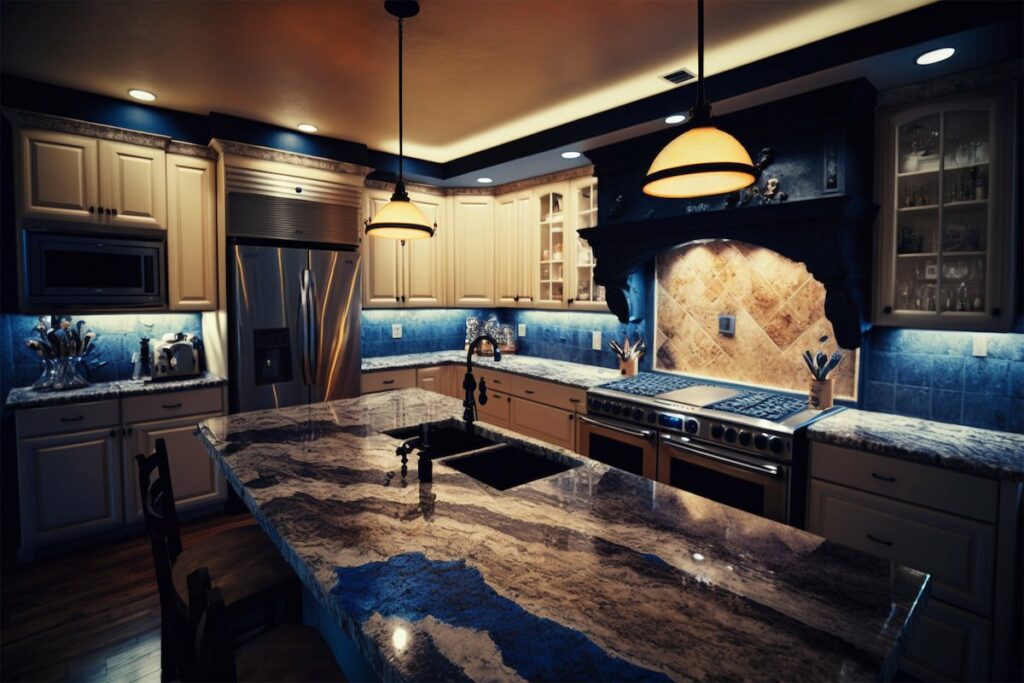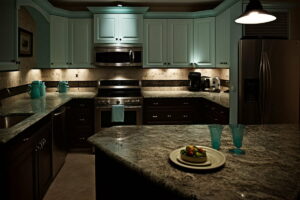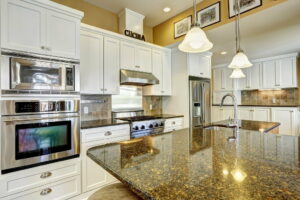When it comes to customizing your countertops, the edging can be just as important as the material you choose. Edging options are available in a variety of styles, each with its own unique look and feel. In this article, we’ll explore the most popular edging styles and provide some tips on how to choose the right one for your specific design preferences and budget.
The Importance of Edging for Custom Countertops
While the material you choose for your countertop can set the tone for your entire kitchen or bathroom, the edging can make a big impact on the overall aesthetic. Edging options can range from simple and classic to intricate and ornate, giving you a wide variety of options to choose from when it comes to customizing your countertops.
Not only does the edging provide a visual element to your countertop, but it can also play a role in the functionality and maintenance of your surface. A well-designed edge can prevent chips and cracks, while also making it easier to clean and maintain your countertop over time.
Types of Edges for Countertops
When it comes to choosing the right edging for your custom countertops, there are a variety of options available. Here are some of the most popular types of edges to consider:
1. Bullnose
The bullnose edge is a classic, rounded design that is one of the most popular choices for countertops. This style is characterized by a smooth, curved edge that creates a soft and elegant look. Bullnose edges are a great choice for traditional and modern kitchens alike.
2. Bevel
The bevel edge is another popular choice for custom countertops. This style features a straight edge that is cut at a slight angle, creating a clean and modern look. Beveled edges can be subtle or more dramatic, depending on the angle and width of the cut.
3. Ogee
The ogee edge is a more intricate and ornate design that features a double curve. This style is characterized by a concave curve that flows into a convex curve, creating a dramatic and elegant look. Ogee edges are a great choice for high-end kitchens and bathrooms with a more luxurious feel.
4. Eased
The eased edge is a simple and clean design that features a straight edge with slightly softened corners. This style is a great choice for minimalist and modern designs, as it creates a clean and streamlined look.
5. Waterfall
The waterfall edge is a unique and modern design that features a dramatic, cascading effect. This style creates a continuous, flowing look that can add a sense of movement and energy to your kitchen or bathroom.
6. Double Bevel
The double bevel edge is a more intricate and layered design that features two bevels cut into the edge. This style creates a unique and dynamic look that can add depth and texture to your countertop.
7. Dupont
The Dupont edge is a more ornate and elegant design that features a subtle curve that transitions into a smaller, convex curve before flowing back into a larger, concave curve. This creates a complex and elegant look that is a great choice for high-end kitchens and bathrooms.
8. Chiseled
The chiseled edge is a more rustic and natural design that features a rough, textured edge. This style is characterized by irregular and uneven edges that can add a sense of warmth and character to your countertop.
Choosing the Right Edging for Your Countertops
With so many options available, it can be overwhelming to choose the right edging for your custom countertops. Here are some tips to help you make the best decision for your specific design preferences and budget:
1. Consider Your Design Style
The edging you choose should complement the overall design style of your kitchen or bathroom. If you have a more traditional or classic design, a bullnose or ogee edge may be the perfect choice. For modern and minimalist designs, a beveled or eased edge can create a clean and streamlined look.
2. Think About Durability and Maintenance
Some edging styles, such as chiseled and waterfall edges, may require more maintenance and upkeep over time. Consider how often you are willing to clean and maintain your countertop, and choose an edging style that fits within your maintenance preferences and budget.
3. Factor in Your Budget
Different edging styles can vary in cost, with more ornate and complex designs typically being more expensive. Consider your budget when choosing an edging style, and explore options that fit within your price range.
Conclusion
Choosing the right edging for your custom countertops can have a big impact on the overall look and feel of your kitchen or bathroom. Whether you prefer a classic bullnose edge or a more intricate ogee or Dupont edge, there are a variety of options available to suit your design preferences and budget. By considering your design style, maintenance preferences, and budget, you can choose the perfect edging to customize your countertops and create the perfect look for your space.
FAQs
Can I change the edging on my existing countertops?
In some cases, it may be possible to change the edging on your existing countertops. However, this will depend on the material of your countertop and the type of edging you want to add or remove. It is best to consult with a professional to determine if this is possible for your specific situation.
Are certain edging styles more durable than others?
Some edging styles may be more prone to chipping or cracking over time, while others may require more maintenance and upkeep. It is important to choose an edging style that fits within your maintenance preferences and budget, and to take proper care of your countertop over time to ensure longevity.
Can I customize the width of my chosen edging style?
Depending on the material and design of your countertop, it may be possible to customize the width of your chosen edging style. This is a detail that can be discussed with your countertop professional during the customization process.
How do I clean and maintain my custom countertop with a more intricate edging style?
It is important to follow the specific cleaning and maintenance instructions provided by your countertop professional for your custom countertop. In general, regular cleaning with a mild, non-abrasive cleaner and avoiding harsh chemicals or abrasive materials can help to maintain the appearance and integrity of your countertop over time.





